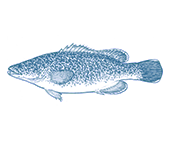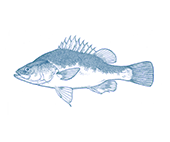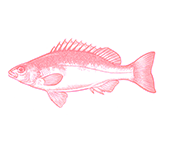




- Better Choice
- Eat Less
Wild Caught
Region:
WA
Note: Choose baited pot and net-caught blue swimmer crabs from WA rather than blue swimmer crabs caught by bottom trawl in Shark Bay.
- Blue swimmer crabs are caught in commercial fisheries in QLD, NSW, SA and WA.
- The WA blue swimmer crab fisheries use baited pots, bottom otter trawl and botton gillnet fishing methods.
- Some blue swimmer crab stocks in WA were previously overfished; it is likely strong management actions in place will support the continued rebuilding of these stocks.
- Blue swimmer crabs are mainly caught in pots, with minimal habitat impacts and bycatch. There are higher bycatch and habitat impacts associated with trawl-caught blue swimmer crabs from WA.
- WA Shark Bay Blue Swimmer Crab Fishery, West Coast Blue Swimmer Crab Fishery (611t in 2020/21)
Blue swimmer crabs are found within near-shore, marine embayments and estuarine systems throughout some tropical, subtropical and temperate Australia and New Caledonia. Blue Crabs occur in a wide range of algal and seagrass habitats, and on sandy and muddy substrata, from the intertidal zone to a depth of at least 50m. Commercial fisheries operate in QLD, NSW, SA and WA.
The largest fishery in WA operates in Shark Bay; other smaller scale fisheries in WA operate along the west coast. A severe marine heatwave along the western coastline of WA severely affected blue swimmer populations from 2011-13. Management actions put in place have supported the rebuilding of the populations; while blue swimmer crab numbers are not yet fully recovered, it is expected that good management will ensure populations will be healthy in the near future. Other areas of the coastline where blue swimmer crabs are caught, such as Cockburn Sound, remain closed due to concerns over stock issues.
Blue swimmer crabs are mainly caught using crab pots or traps set over sandy or seagrass habitats. These pots are lowered to the seafloor and rest in place until they are lifted up for harvest, with little impact on habitat.
The pot fishing methods used to catch most blue swimmer crabs in WA are effective at targeting blue swimmer crabs, resulting in little else being caught, and if caught can mostly be released alive.
In the Shark Bay fishery, blue swimmer crabs are also caught as retained bycatch in bottom otter trawl fishing targeting prawn species. This fishing method has a significantly higher but still moderate impact on seafloor habitats and endangered bycatch species including sea snakes.
Marine parks in Shark Bay provide significant protection for habitats and bycatch species there, but are largely absent from other WA blue swimmer crab fishing grounds.


